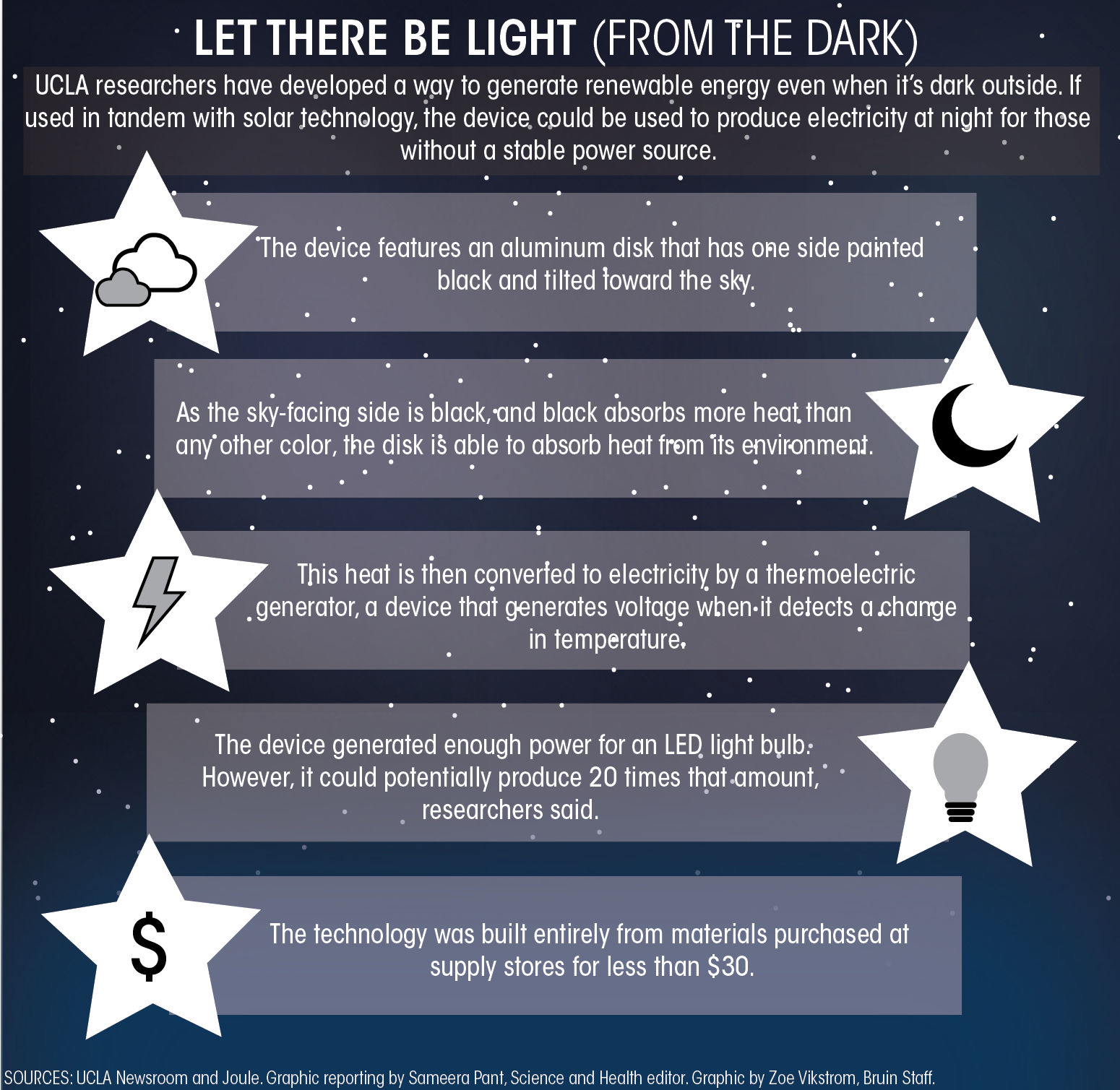UCLA helps develop cheap device that generates power at night

By Qiaozhen Wu
Oct. 11, 2019 12:35 a.m.
UCLA researchers have developed a device that generates electricity from the night sky.
A team of researchers from UCLA and Stanford University found it could produce renewable energy at night using a natural process called radiative sky cooling, according to a study published Sept. 12 in the journal Joule.
Aaswath Raman, a UCLA materials science and engineering assistant professor who led the study, said the idea arose when he traveled to developing countries and found that certain places do not have access to electricity at night.
“Sometimes, I wouldn’t know that we were driving through a village,” Raman said. “That got me thinking about … ways to generate electricity at night for these places.”
Raman said the mechanism behind the device utilizes a natural phenomenon called radiative sky cooling.
Radiative sky cooling is a process in which an object emits energy into the air, some of which rises through the atmosphere and into the universe. This causes the surface of the object to have a lower temperature than the surrounding air.
Researchers were able to capture the energy from the surrounding air and convert it to electricity.
“Radiative sky cooling happens everywhere around us,” Raman said. “That is why recordings of a thermal radiative camera at night shows that an object is cooler than its surroundings.”
The device, which is meant to be set on a rooftop, has an aluminum disk that radiates energy of the target wavelength, Raman said. A generator then converts the temperature difference into electricity.
“We were able to utilize the temperature difference between the aluminum surface and the air temperature,” Raman said. “When there is a temperature gradient, we can generate electricity.”
The device is fairly low-cost, Raman said. The team bought its components from a supply store for only around $30, he added.
Rajit Gadh, a UCLA mechanical and aerospace engineering professor, said the idea of utilizing radiative sky cooling is innovative and could potentially power larger energy loads.
The concept behind the device reminds Gadh of the thermocouple, a 200-year-old invention that measures temperature. The device determines the temperature by measuring the voltage generated from the temperature gradient created by two dissimilar metals.
Shanhui Fan, an electrical engineering professor at Stanford University and the paper’s second author, said the device can currently generate 25 milliwatts per square meter, which is enough to power a single LED light bulb.
“The energy produced is not much compared to solar panels,” Fan said. “But an exciting aspect of the device is that it works at night – exactly when solar panels do not.”
The device can be modified and could potentially generate 0.5 watts per square meter – 20 times the current amount – by optimizing the components. However, the device is still not comparable to solar panels, which can generate 1,000 watts per square meter, Fan said.
Although the energy produced is much less than that produced by solar panels, it could be the only way of generating renewable energy for places in the world that experience lower levels of sunlight, Raman said.
The low cost of the device indicates its potential to be produced in large amounts and become a useful means of energy generation in the future, Fan said.
Raman added the study shows that the night sky could be a tremendous resource for future energy generation.
“There is yet a lot to be explored in the potential of the night sky,” Raman said.


